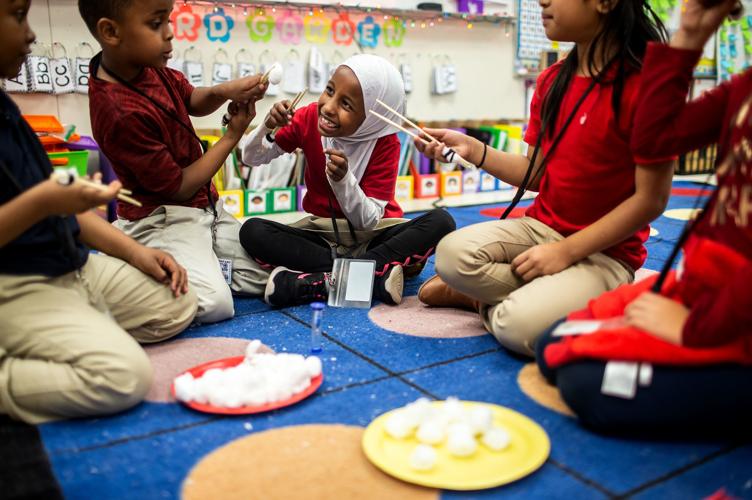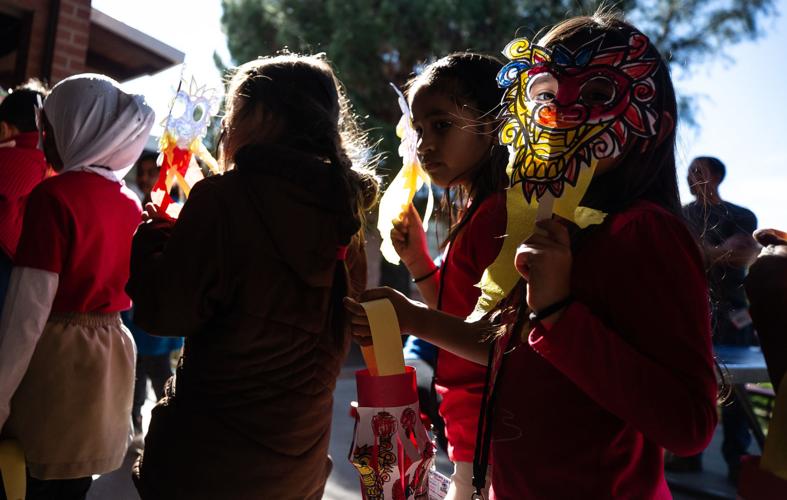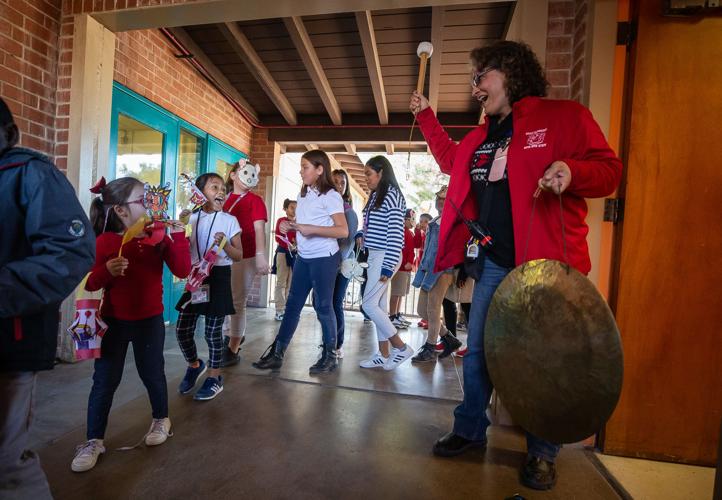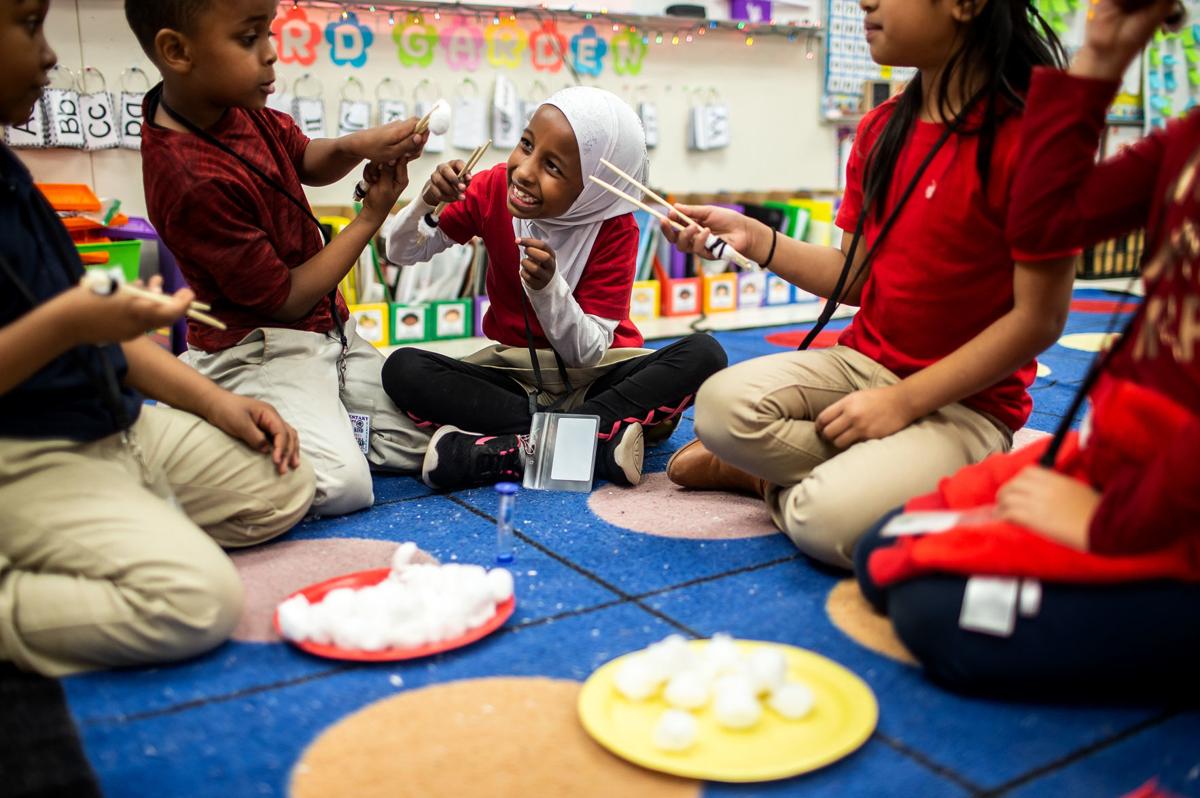Tucson’s children have far fewer opportunities than many other kids in the U.S. for a bright future, in economic mobility as an adult, health and life expectancy, a recent study says.
Tucson came in ninth-worst in both overall child opportunity and the proportion of children in low-scoring neighborhoods, according to Brandeis University’s Child Opportunity Index, which rates neighborhoods and chances for success within the country’s 100 largest metropolitan areas.
The study focuses on resources and conditions that affect a child’s development, health and ability to reach their potential. Factors include access to good schools, the quality of peer and adult influences, economic resources, environmental quality and resources for healthy living. In Tucson, the study shows, 32% of the children live in low-opportunity neighborhoods.
“It is not surprising to find Tucson low on the list given our high poverty rate, percent of the population who are Latinx, African American or Native American, and lack of state investment in human services compared to other states,” said Eric Schindler, chief executive officer with Child & Family Resources.
“As a licensed psychologist for nearly 40 years, and CEO of (Child & Family Resources), a human services organization that has been in Tucson for 50 years, it has been striking to see the differences in resources and opportunities between families who live in our poorest neighborhoods and those from high income ZIP codes. The many layers of unfairness and inequality are striking to all of us professionals who work in human services.”
Scores for black and Hispanic children are substantially lower in the study than for white, Asian and Pacific Islander children. Nationally, about 60% of both black and Hispanic kids live in low- or very low-opportunity neighborhoods compared to about 20% of white and Asian children.
Put another way: Black children are 7.6 times more likely than white children to live in neighborhoods with substantially lower opportunity to grow up healthy and successful, and Hispanic children are 5.3 times more likely than white children to live in neighborhoods with lower opportunity.
That lack of opportunity not only affects a child as he or she grows, the report shows, it also lowers life expectancy rates, and living in these neighborhoods diminishes a family’s chances of improving its economic status.
Biggest bang for your buck
Access to early childhood education was among the indicators in the study.
While some public school districts juggle their budgets to provide free preschool, it’s not enough to fill the demand. Tucson Unified, for example, offers preschool services for children who have academic and special needs, with about 1,500 children enrolled and more than 500 on the waitlist.
Efforts to expand access to early childhood education have been ongoing. One of the current local efforts is the Pima County Preschool Investment Program, which aims to provide free high-quality preschool for 3- and 4-year-olds in Pima County who live under 200% of the federal poverty level, which is about $52,000 for a family of four.

How well kids fare depends on whether resources are “hoarded” or “shared” within a given city. Researchers have an incomplete grasp of what “sharing” cities do differently.
In Pima County, fewer than 20% of 3- and 4-year-olds attend a high-quality preschool and half the children in that age bracket live under 200% of the federal poverty line, 60% of which are children of color, says Penelope Jacks, chair of the board for the Center for Economic Integrity, the nonprofit spearheading the project.
The program would create a two-generational poverty intervention by supporting parents with young children to have time to work and giving children the benefits of early childhood education, Jacks said.
The idea is for the county to contribute $1.9 million, and for local municipalities to contribute as well. Nonprofit United Way, tax-funded agency First Things First and private donors will also contribute, Jacks said. She hopes to have $5 million committed in scholarships for at least 500 children by next school year.
Studies show that children who attend preschool are less likely as adults to get arrested or be on welfare and more likely to graduate from high school and college, earn a higher wage and be in a stable marriage. It’s the “biggest bang for your buck” rather than spending that money on more expensive and less successful interventions later in a child’s life, says Michelle Crow, Southern Arizona director for the Arizona Children’s Action Alliance.
“Early learning opportunities are key for children’s future success in school and beyond, into the workforce,” she said. “There’s been a real lack of investment, not just in Tucson but across the state.”
Arizona cut funding to child-care subsidies a decade ago and has been restoring funding incrementally. The independent state agency First Things First provides subsidies through tobacco taxes. The state also gets millions in federal subsidies for child care. Gov. Doug Ducey’s executive budget would expand child-care subsidies by $23 million, according to state budget director Matthew Gress. Last year’s increase was about $55 million. Gress said while this won’t increase the rate of subsidy families receive, it should eliminate the need for a waitlist.
Currently, the waiting list to receive a subsidy for child care is long, and the amount people get covers about 25% of the market rate, Crow says.
“This report echoes what numerous other reports have said before, namely that while the economy has technically ‘recovered’ from the Great Recession, that economic recovery is not reaching everywhere and everyone that it should — especially hardworking, low-income families who need it the most,” Crow said.
“I think the question we need to ask ourselves is why, and what can we do about it.”
Neighborhood inequities
Crow said one of the things she found “very troubling” is that Tucson’s kids rank disproportionately high in the very lowest category of opportunity, with nearly 1 in 3 children living in unhealthy neighborhoods.
“If we want strong communities, then we have a road map here that identifies the factors we need to focus on and where we can most move the needle on a neighborhood-by-neighborhood level,” she said.
The study also shows that children within the same metropolitan areas have much greater variation in their chances for success than children from different metropolitan areas have, with the disparity between cities scoring a rate of 9% while the variation in opportunity within the same city is 91%.
How well children fare depends on whether resources and opportunity are “hoarded” or “shared” within a given city, the findings show.
The report provides a comparison between Detroit and Colorado Springs, which have the same overall score. Children who live in very low-opportunity neighborhoods in Detroit are less likely to benefit from the city’s resources and are being left behind, whereas children in similar, struggling neighborhoods in Colorado Springs have better access to the city’s resources.
Tucson, in comparison to those two metropolitan areas, does better than Detroit in sharing resources but does not do as well as Colorado Springs.
“We all want the same things for our children — good schools, parks and playgrounds, safe housing, and access to healthy food. Our research shows that some metros, like Colorado Springs, are doing a better job of making these conditions available to all children, while in other metros many children, and especially black and Hispanic kids, don’t have the same access to the conditions they need to thrive,” said Dolores Acevedo-Garcia, director of the Brandeis study.
“More research is needed to understand what ‘sharing’ metros are doing differently, and we hope our data sparks conversations about these important questions in communities across the U.S.”

Students react as Principal Deanna Campos bangs a gong during a Chinese New Year celebration at Wright Elementary School, on Jan. 31, 2020. Wright Elementary is a school beating the odds by being high-achieving in an economically distressed area and with a diverse and low-income student body.
Other education indicators
Among the other education indicators considered in the Brandeis study are third-grade reading and math proficiency, high school graduation rates, and teacher experience, which all vary between school districts and neighborhood schools.
For example, the graduation rate in Sunnyside, the region’s second-largest school district, is 77% while in Catalina Foothills it’s 96%, according to 2018 auditor general spending reports.
Sunnyside passing rates for third-grade statewide achievement tests are less than half what they are in Catalina Foothills. These school districts also have a large disparity in the poverty rate, with Sunnyside’s being five times that of Catalina Foothills, according to the auditor general filings.
Average teacher experience varies between Tucson-area school districts as well. But all the major school districts have more teachers in their first three years teaching than the national average of 10%, according to 2016 numbers from the National Center for Education Statistics.
Quality of schools also vary within individual school districts. For example, the Arroyo Chico Region of TUSD has numerous schools that fall on the high and low end of the state’s accountability system, a letter-grade system that is a controversial but widely relied upon statewide measure of success.
The region has schools like Sam Hughes and Miles elementaries, which consistently score high, as well as Catalina High and Utterback Middle, which consistently score low.
“There is not one major factor that determines a school’s academic success or academic struggle,” says Richard Sanchez, the assistant TUSD superintendent who oversees the region. “Each school has unique circumstances that play a role in academic achievement.”
Sanchez says the factors mentioned in the study are influential but not unique to a particular area of the city or region and don’t always indicate whether a school is succeeding. Tucson Unified also has schools with higher poverty levels that are doing well under the accountability system.
For example, Wright Elementary School has 66 students registered with the McKinney-Vento Homeless Assistance Act, which provides federal funds and services for homeless students. One of the biggest problems facing families at the school is rising rents forcing them to move or become homeless, says Principal Deanna Campos.
Despite these economic challenges, Wright is a B school, although its neighboring elementary schools, Davidson and Blenman, received D grades, and Cragin received a C.
“The reason why we’re successful is you have to have a principal or someone who’s willing to go out and find help,” Campos said.
In her fourth year as Wright’s principal, Campos and staff members looked for partnerships to fill needs and create opportunities for their families, whether it’s partnering with Panera for free bread, El Charro Café for burritos, Costco for backpacks, or helping parents with job applications and offering them English and citizenship classes.
Wright has a focus on college readiness, as well as on teaching kids to pass the state standardized test. Wright also has a preschool — again, one of the indicators in the study for childhood opportunity.
Campos said the secret to success is supporting teachers and having high expectations for students, in academics and behavior.
“We’ll see in 10, 15 years,” she said. “Maybe the kids will come back and say, ‘What you did had an impact.’”







